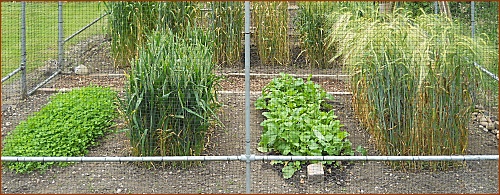 |
||||||
 |
Crop Rotation | |||||
| In
medieval times, farming was usually based on an 'open field' system,
each village usually having at least three unfenced areas surrounding
the village. These would be divided into strips cultivated by the
villagers, often working as 'serfs' to the landowner. Wheat or rye would
be grown in one field, barley or oats in the second, and the third would
be left uncultivated or fallow. In the days before artificial
fertilisers, the livestock would be the source of manure to replenish
the nutrients in the soil. However, this rotation only cropped two
thirds of the cultivated land, with the crops rotating by one field each
year.
When Charles Townshend (1674 -1738) retired from politics in 1730, he devoted his time to agricultural improvements. Although turnips were grown in Britain, Townshend became a keen advocate for including them within a rotational system. He introduced a Flemish system, later developed as the 'Norfolk four-course rotation', and also leading to him acquiring the name of 'Turnip' Townshend. His rotation had clover, wheat, turnips and barley as the four crops grown in rotation, the clover and turnips removing the need for a fallow area. These additional crops also provided fodder for livestock during the winter, an important factor where large flocks of sheep were common. Previously many of the livestock had to be slaughtered because of the lack of winter fodder. A modern updated Norfolk four-course rotation could include peas or field beans, wheat, potatoes and barley as the four crops that could be grown. Artificial fertilisers would be needed as sheep are not included within the rotation. |
||||||
 |
1. Peas or field beans, legumes that have nitrogen fixing nodules on the roots. When ploughed in, the nitrogen becomes available for the next crop. 2. Wheat, utilising the nitrogen released by breakdown of the legume root nodules. 3. Potatoes, lifted and stored to be released over the winter as required for human or animal consumption. 4. Barley, relying on the use of artificial fertilisers. |
|||||
| Clover | Wheat | Turnips | Barley | |||
| An example of the original Norfolk four-course rotation | ||||||
| Additional information on Crop Rotation is available as a 'pdf' file. Use 'back' to return to this page. | ||||||